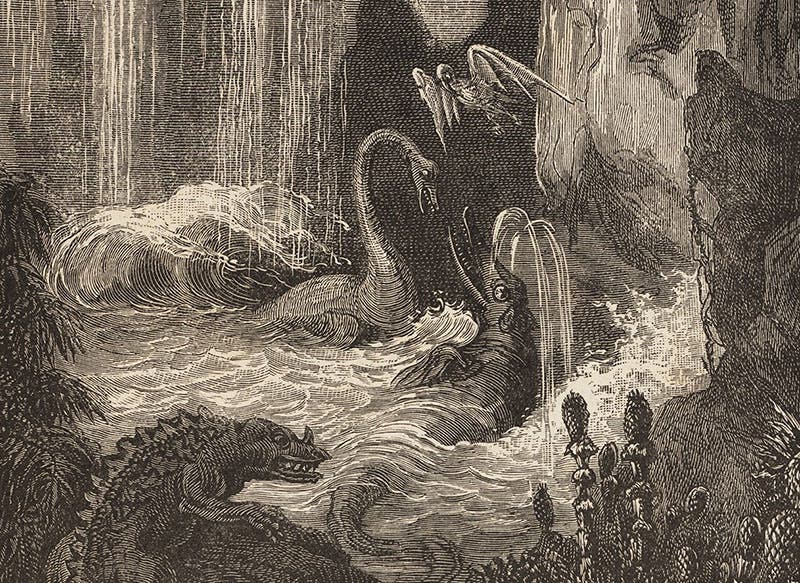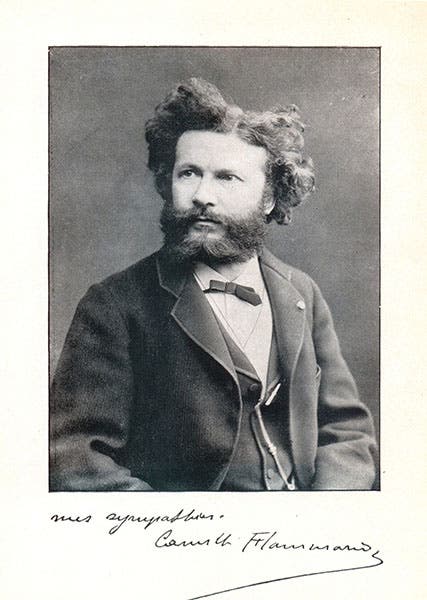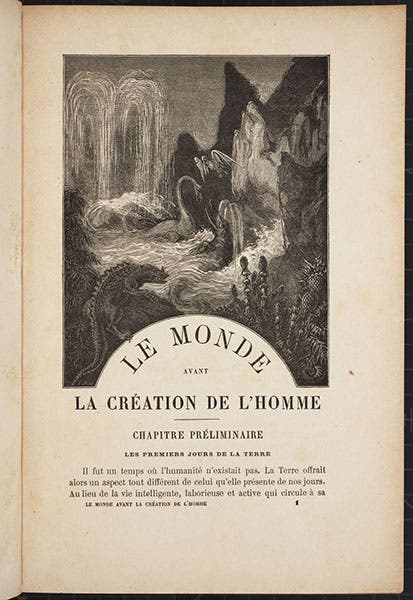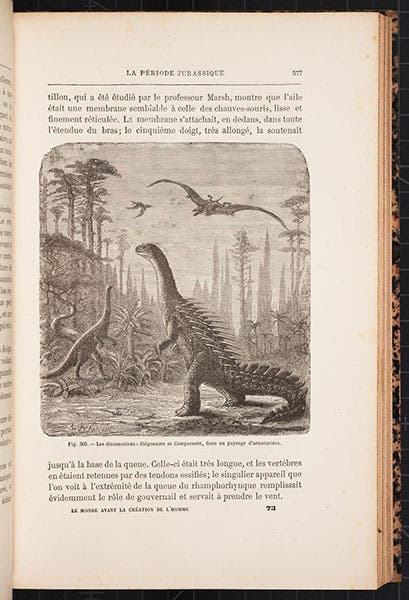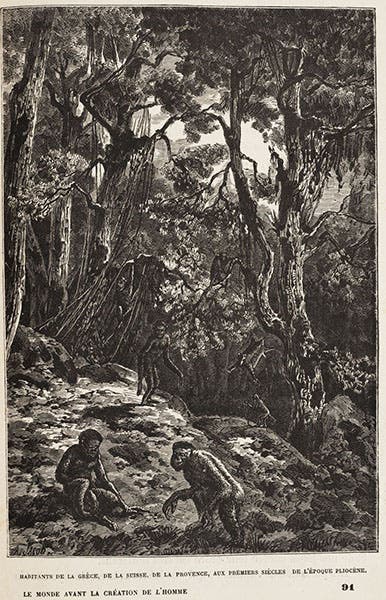Scientist of the Day - Camille Flammarion
Camille Flammarion, a French astronomer and popular science writer, was born Feb. 26, 1842. The French, in the last quarter of the 19th century, were among the more prolific producers of popular books on science, perhaps following the example of Louis Figuier, who wrote books on the history of science, and on prehistoric life, that were well received, or perhaps taking a hint from Jules Verne, whose books were as much about science as about adventure. Flammarion wrote his first book for the general public in 1862, when he was 20 years old, and he kept at it fifty years. We have published two posts on Flammarion; the first about his book, L’atmosphere (1888) , which contained many fine wood engravings (like all his books), and one notorious specimen that looked medieval and was later assumed to be medieval by scholars that should have known better. The other post, four years ago, dealt with Flammarion's library of books on "aerostatics," or ballooning, 27 of which were acquired by the Linda Hall Library, most in their original decorative paper covers.
Today we are going to look at a book that Flammarion published in 1886, when he was 44 years old. It is called: Le monde avant la création de l'homme; origines de la terre, origines de la vie, origines de l'humanité, a book about what the Earth was like before we humans appeared, and deals with, so the title says, the "origins of Earth, the origins of life, and the origins of humanity." Figuier had written two books on the subject around 1870, but Figuier took a more systematic and, shall we say, more scientific view of the Earth's history, having his artists construct tableaux of life in Silurian times, and during the Jurassic era, and into the Ice Age, that were reasonably accurate for the time. Flammarion provided his reader with a large number of scientific facts, and included geological maps and sections, and drawings of fossils, but he did feel free to let his artists indulge themselves with more fanciful reconstructions, and we have leaned in that direction in selecting our images, because they are, well, fun!
The very first page has a decorative headpiece that sets the tone for many of the later illustrations, with a view of the roiling waters of the prehistoric deep, inhabited by primitive swimming (and flying) saurians (fourth image). We used a detail from this headpiece as our first image, so you can better appreciate the characteristic texture of a wood engraving. Flammarion used many different illustrators for this book, most frequently G. Devy and A. Jacob, but I have not been able to find out anything about them.
Another early image depicts what the caption informs us are a Stegosaurus and a Compsognathus (fifth image). Compsognathus was well-known in 1886 (although it was quite a bit smaller than the creature in the picture), but the Stegosaurus was brand new, just dug up in the American west, so the inaccuracies in its reconstruction can be excused. For this image, I included the entire page, so you can get an idea of how the images fit in with the text. The book, by the way, is a large quarto, so these pages are about a foot tall.
Presumably the wood engraving of the dinosaur peering in the 6th-floor-window of a Parisian house was intended to introduce a sense of scale (sixth image). But since it was not further explained, an inattentive reader might certainly get the wrong idea about when dinosaurs lived.
One of the oddest images, because it is allegorical, shows a variety of prehistoric animals lined up to hear a clarion call, the trumpet of science, which is revealing their existence to the modern world (seventh image). One might think that was Charles Darwin conversing with the monkeys near the trumpeter, but Flammarion was more partial to Ernst Haeckel, many of whose illustrations of fossils he copied for this book.
Flammarion did have a sense of humor. The reconstruction of the world of Pliocene apes might have carried a more sober caption. Instead, they are identified as the original Greeks, Swiss, and Provençals; perhaps we are looking at plio-Plato and plio-Pythagoras.
But there is a lot of good science in this book for the ordinary reader to take in. I especially like the fact that Flammarion chose to reproduce what is now a very famous diagram, but in 1886, not so much. It is the drawing of the five stages in the evolution of humans (here reduced to four), which Benjamin Waterhouse Hawkins drew for the frontispiece for Thomas Huxley’s book, Man’s Place in Nature (1863). We showed it in our post on Huxley.
We exhibited Le monde avant la création de l'homme in our 2012 exhibition, Blade and Bone, where we opened it to one of the chromolithographs in the book, showing early humans and cave bears battling for living space. Here is that entry. But since the chromolithographs (printed from multiple stones) were out of register in our copy, and probably in all copies, I did not include any of those here.
Flammarion wrote many illustrated books, so there is probably another Flammarion post in our future, perhaps one on Mars. I look forward to that.
William B. Ashworth, Jr., Consultant for the History of Science, Linda Hall Library and Associate Professor emeritus, Department of History, University of Missouri-Kansas City. Comments or corrections are welcome; please direct to ashworthw@umkc.edu.


